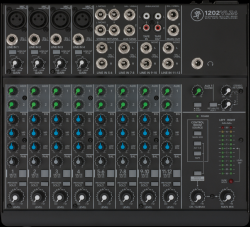Difference between revisions of "Stereo Mixer to Mono L1®"
m |
m |
||
| Line 1: | Line 1: | ||
{{Compact icon}}{{Model II icon}}{{Model 1S icon}} | {{Compact icon}}{{Model II icon}}{{Model 1S icon}} | ||
| + | <html> | ||
| + | <link rel="stylesheet" type="text/css" href="/shadowbox/shadowbox.css"> | ||
| + | <script type="text/javascript" src="/shadowbox/shadowbox.js"></script> | ||
| + | <script type="text/javascript"> | ||
| + | Shadowbox.init({ | ||
| + | handleOversize: "drag", | ||
| + | modal: true | ||
| + | }); | ||
| + | </script> | ||
| + | |||
| + | <style> | ||
| + | html {max-width:1066px;} | ||
| + | |||
| + | .leftColTOC { | ||
| + | float:left; | ||
| + | width:350px; | ||
| + | } | ||
| + | .rightColTOC{ | ||
| + | margin-top:7px; | ||
| + | margin-left:10px; | ||
| + | padding:10px; | ||
| + | float:left; | ||
| + | clear:right; | ||
| + | max-width:50% ; | ||
| + | min-width:320px; | ||
| + | border: 1px solid blue; | ||
| + | -webkit-border-radius: 10px; | ||
| + | -moz-border-radius: 10px; | ||
| + | border-radius: 10px; | ||
| + | |||
| + | } | ||
| + | |||
| + | #toc {border: 1px solid blue; | ||
| + | -webkit-border-radius: 10px; | ||
| + | -moz-border-radius: 10px; | ||
| + | border-radius: 10px; | ||
| + | } | ||
| + | </style> | ||
| + | |||
| + | <div class="leftColTOC"> | ||
| + | </html> | ||
| + | __TOC__ | ||
| + | <html> | ||
| + | </div> | ||
| + | |||
| + | <div class="rightColTOC"> | ||
| + | </html> | ||
==Using a stereo mixer with an {{L1}}== | ==Using a stereo mixer with an {{L1}}== | ||
Here are some examples of connecting a stereo mixer to the mono input on your {{L1}}. | Here are some examples of connecting a stereo mixer to the mono input on your {{L1}}. | ||
| + | |||
| + | [[Image:Mackie1202VLZ4.png|250px|Stereo Mixer]] | ||
The inputs on the {{Model 1S}} or {{Model II}} or the [[L1%C2%AE_Compact#Channel_2|Compact Channel 2]] are MONO. | The inputs on the {{Model 1S}} or {{Model II}} or the [[L1%C2%AE_Compact#Channel_2|Compact Channel 2]] are MONO. | ||
| + | |||
| + | |||
| + | <html> | ||
| + | </div> | ||
| + | <div style="clear:both"></div> | ||
| + | </html> | ||
| + | |||
| + | |||
;Model 1S Analog Input | ;Model 1S Analog Input | ||
Revision as of 06:27, 31 December 2014
Using a stereo mixer with an L1
Here are some examples of connecting a stereo mixer to the mono input on your L1 .
The inputs on the L1 Model 1S or L1 Model II or the Compact Channel 2 are MONO.
- Model 1S Analog Input
{{#Click:Model_1S#Analog_Input|Image:Power Stand Analog Input 250.png|Model 1S Analog Input}}
- Model 1I Analog Input
{{#Click:Model_II#Analog_Input|Image:Power Stand Analog Input 250.png|Model II Analog Input}}
- Compact Channel 2
{{#Click:L1®_Compact#Channel_2|Image:Compact Channel 2 Balanced.png|Model II Analog Input}}
It's pretty easy to make this work. You can pan all your inputs hard LEFT and take the LEFT output and connect that to your L1 . If you have a stereo source and two stereo channels, then you can
- Run the left side of the stereo source to the left input on one stereo channel,
- Run and the right side of the stereo source to the left side of another stereo channel.
- Pan any other inputs hard left
- Use the left output of mixer and connect that to the L1 mono input.
Here are a some examples of how you can get a mono output out of your stereo mixer.
Mackie 1402 VLZ4
{{#Click:http://www.mackie.com/products/vlz4-series-compact-mixers/downloads/%7CImage:Mackie1402VL4PannedLeftMono.png%7CMackie 1402VLZ4 web page}}
Yamaha MG10
{{#Click:http://usa.yamaha.com/products/live_sound/mixers/analog-mixers/mg_standard_model/mg10/?mode=model#tab=product_lineup%7CImage:YamahaMG10PanLeft.png%7CYamaha MG10 web page}}


